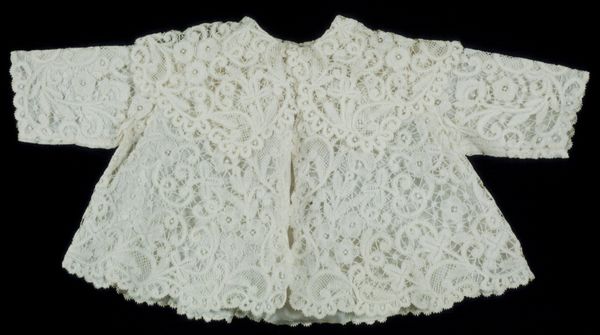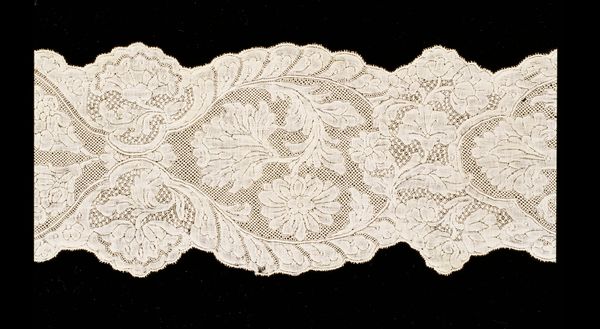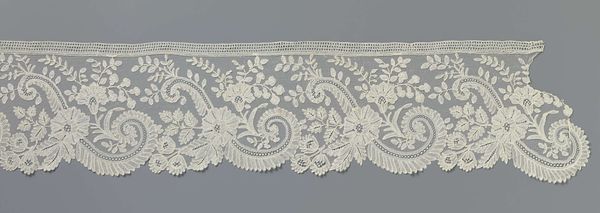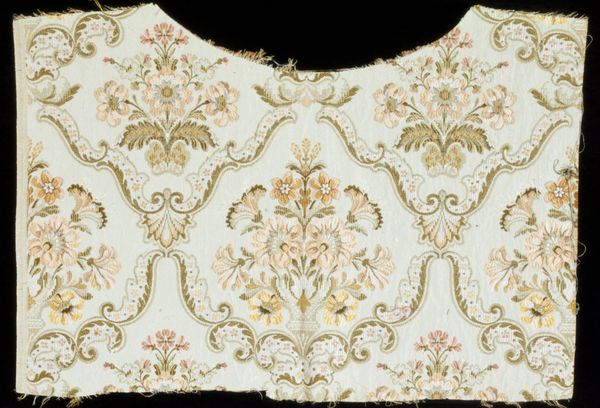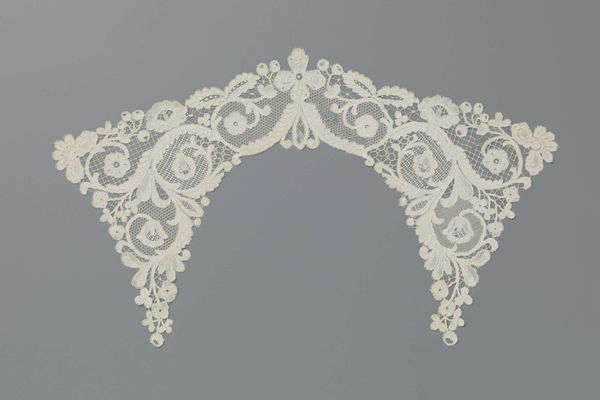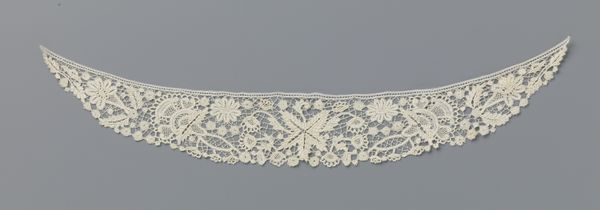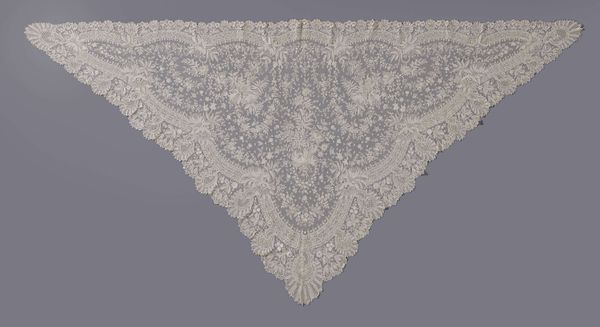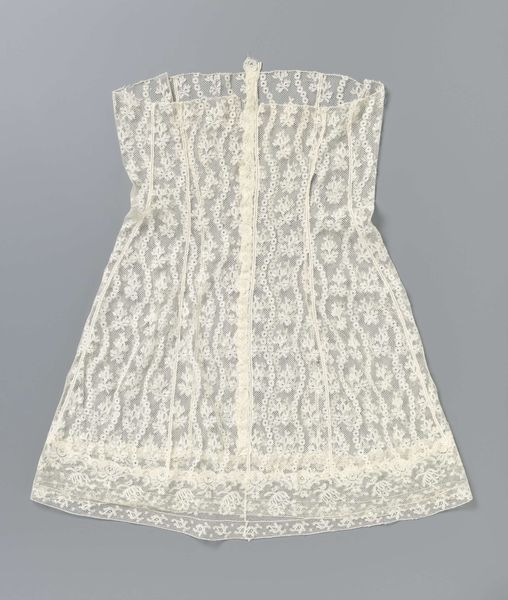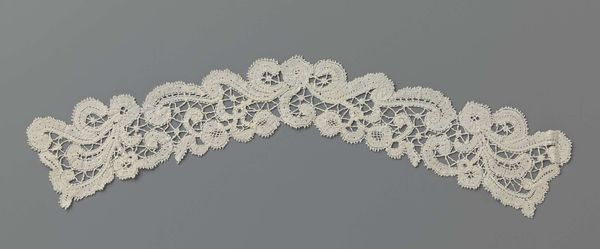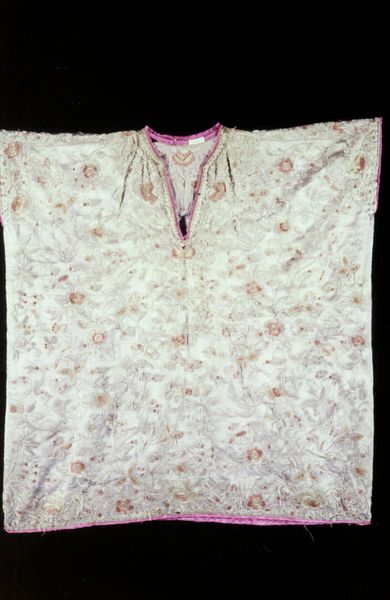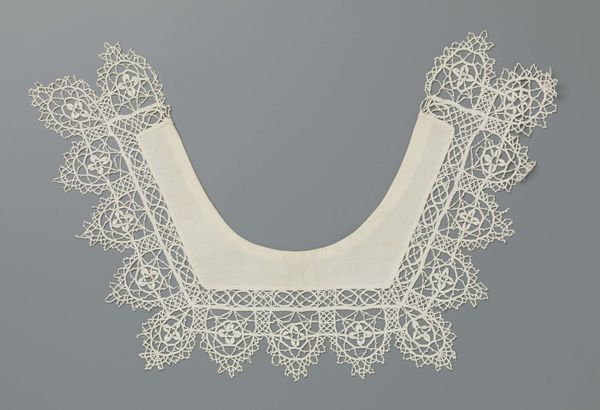
weaving, textile, cotton
#
natural stone pattern
#
weaving
#
textile
#
pattern making
#
fashion and textile design
#
hand-embroidered
#
embroidery
#
fabric design
#
france
#
pattern repetition
#
cotton
#
textile design
#
decorative-art
#
imprinted textile
#
layered pattern
Dimensions: 10 1/8 x 13 in. (25.7 x 33.02 cm)
Copyright: Public Domain
Art Historian: Historian Editor: This is a "Bodice Panel," made around the 19th century, possibly in France, and currently held at the Minneapolis Institute of Art. It's created from textile – cotton, I think – and some weaving and embroidery. It seems so delicate. What statements did it make, do you think, for women to wear during its era? Art Historian: That's a perceptive question. How do you see this particular bodice panel functioning within its historical context? Editor: Well, the patterns look very decorative; it seems like maybe showing off status. But how do we know if it showed rank, wealth, or privilege? Art Historian: Precisely. These aren’t just aesthetic choices; the expense and time involved in creating such intricate lacework speaks volumes. Consider the socio-economic landscape of 19th-century France. The aristocracy, while diminished after the Revolution, still held significant sway, particularly in fashion and the arts. The emerging bourgeoisie also sought ways to display their newfound affluence. Editor: So, it's like a visual signifier in a status contest. Would specific floral patterns or lace techniques signal which social circles you belonged to? Art Historian: Quite possibly. Courtly fashions dictated certain styles, which then filtered down – often copied or adapted – to other classes. The scale and intricacy of the design, the quality of the materials… These are all factors to consider when interpreting the 'politics of imagery', as it were. Editor: That is fascinating to hear about these visual signifiers! I have learned so much about art from a historical point of view. Thank you! Art Historian: You are welcome, it was a pleasure sharing with you. It makes you think about the museum space itself, doesn’t it? How displaying a “Bodice Panel” removes it from its original social context, recasting it as an art object for a new audience.
Comments
No comments
Be the first to comment and join the conversation on the ultimate creative platform.
